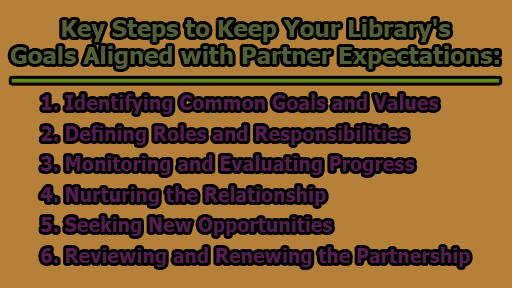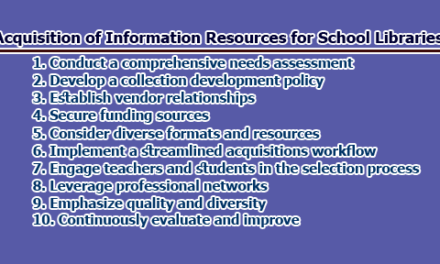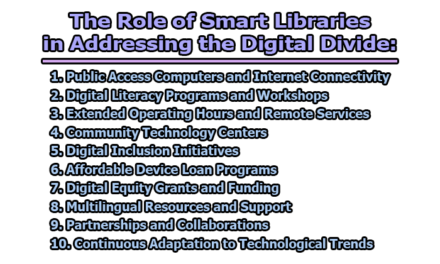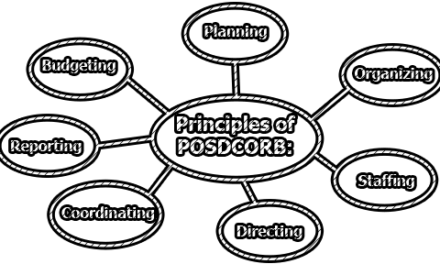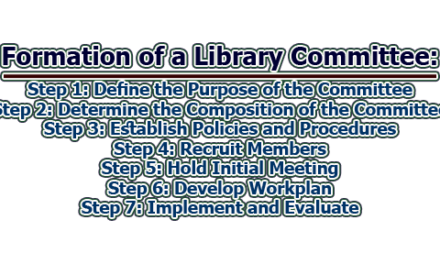Key Steps to Keep Your Library’s Goals Aligned with Partner Expectations:
Libraries often find strength in partnerships, as they can help extend their reach, broaden their offerings, and enhance their impact within the community. However, maintaining successful library partnerships requires careful planning and alignment with shared goals and values. In this article, we will explore the key steps to keep your library’s goals aligned with partner expectations and ensure fruitful collaborations.
1. Identifying Common Goals and Values: The foundation of any fruitful partnership lies in a shared vision. Before embarking on a collaborative endeavor, it is imperative to thoroughly understand your partner’s objectives, needs, and challenges. Simultaneously, it is essential to reflect on your library’s strategic plan, mission, vision, and values. Identifying common goals and values is the first crucial step in establishing a strong partnership. Such alignment fosters trust, respect, and mutual benefit, setting the stage for a successful collaboration.
2. Defining Roles and Responsibilities: Once you have established common ground, the next step is to define the roles and responsibilities of each partner. Clear communication about who does what, when, how, and with what resources is essential. Having a written agreement in place helps avoid confusion, duplication, or conflicts. Establishing a framework for effective collaboration ensures that both parties are working toward their shared goals efficiently.
3. Monitoring and Evaluating Progress: To maintain a productive partnership, it is vital to monitor and evaluate progress regularly. This involves setting key performance indicators and utilizing appropriate tools to collect and analyze data. The process should also include mechanisms for sharing findings and feedback. Monitoring and evaluating your partnership’s success and impact allow you to address challenges, celebrate achievements, and enhance overall performance and accountability.
4. Nurturing the Relationship: Sustaining a long-term partnership requires effort and commitment. Nurturing the relationship with your partner is crucial. Effective communication, appreciation, and recognition are essential to maintaining a positive and respectful attitude. Being prepared to handle disagreements or disputes professionally and adapt to changing circumstances or needs fosters trust and strengthens the bond between partners.
5. Seeking New Opportunities: To expand the potential and impact of your library partnership, you should actively seek out new opportunities for collaboration and innovation. This entails identifying and exploring new areas of interest or need, leveraging your strengths and resources, and involving other partners or stakeholders to enhance your reach and diversity. Sharing success stories and best practices not only inspires others but also helps grow your network and influence.
6. Reviewing and Renewing the Partnership: Partnerships, like any other aspect of library management, need regular review and renewal. Periodically assessing the benefits and challenges of your partnership is crucial. Soliciting and incorporating feedback from your partner and other stakeholders allows you to make informed decisions about whether to continue, modify, or end the partnership. A realistic and respectful approach to partnership review ensures that the relationship remains relevant and effective over time.
In conclusion, maintaining effective library partnerships requires careful planning, continuous communication, and a commitment to shared goals and values. By following the steps outlined in this guide, libraries can not only keep their partnerships aligned with partner expectations but also ensure that these collaborations remain productive and beneficial over the long term. Ultimately, successful library partnerships contribute to a stronger and more vibrant community for all involved.

Former Student at Rajshahi University

